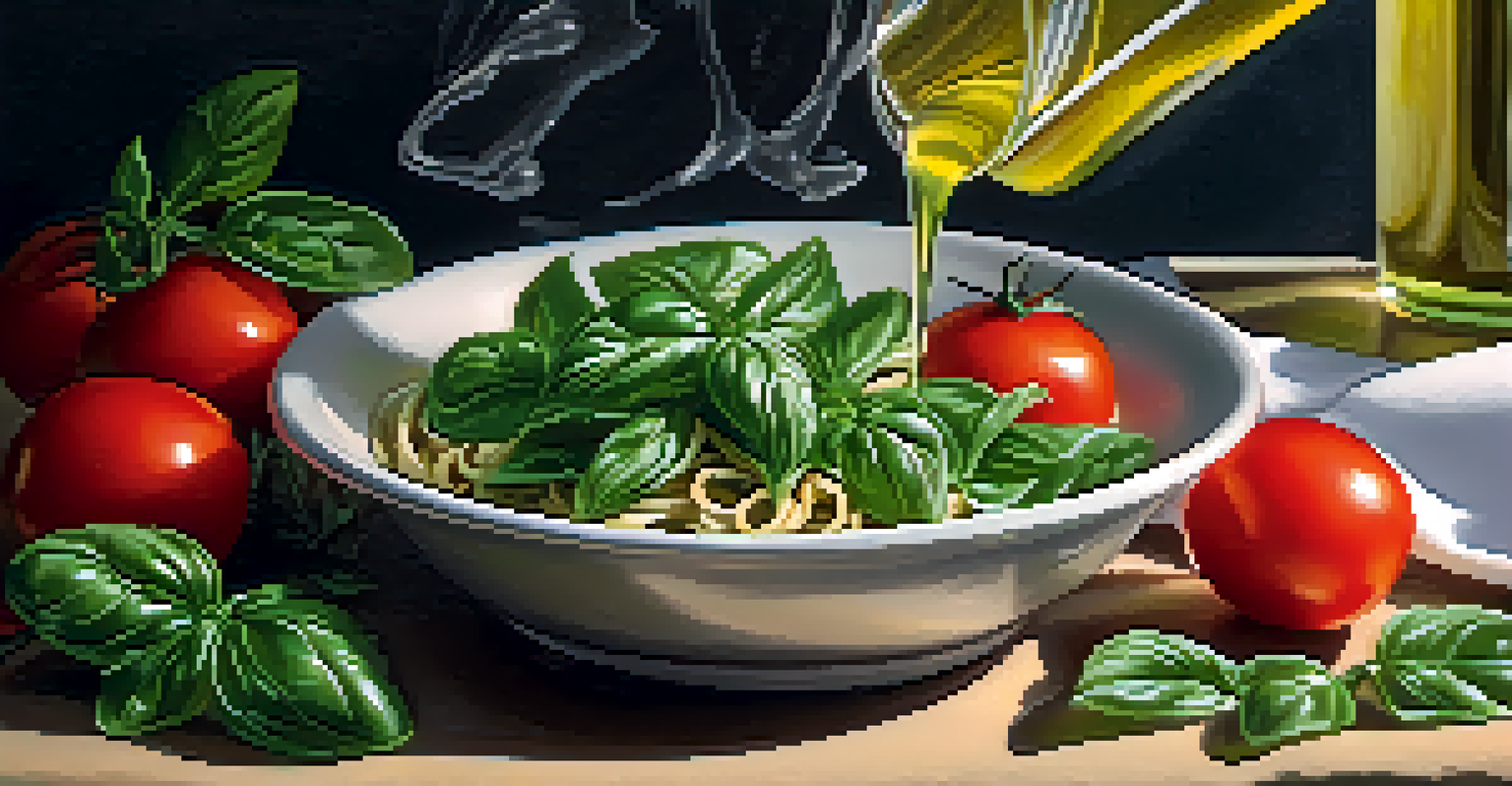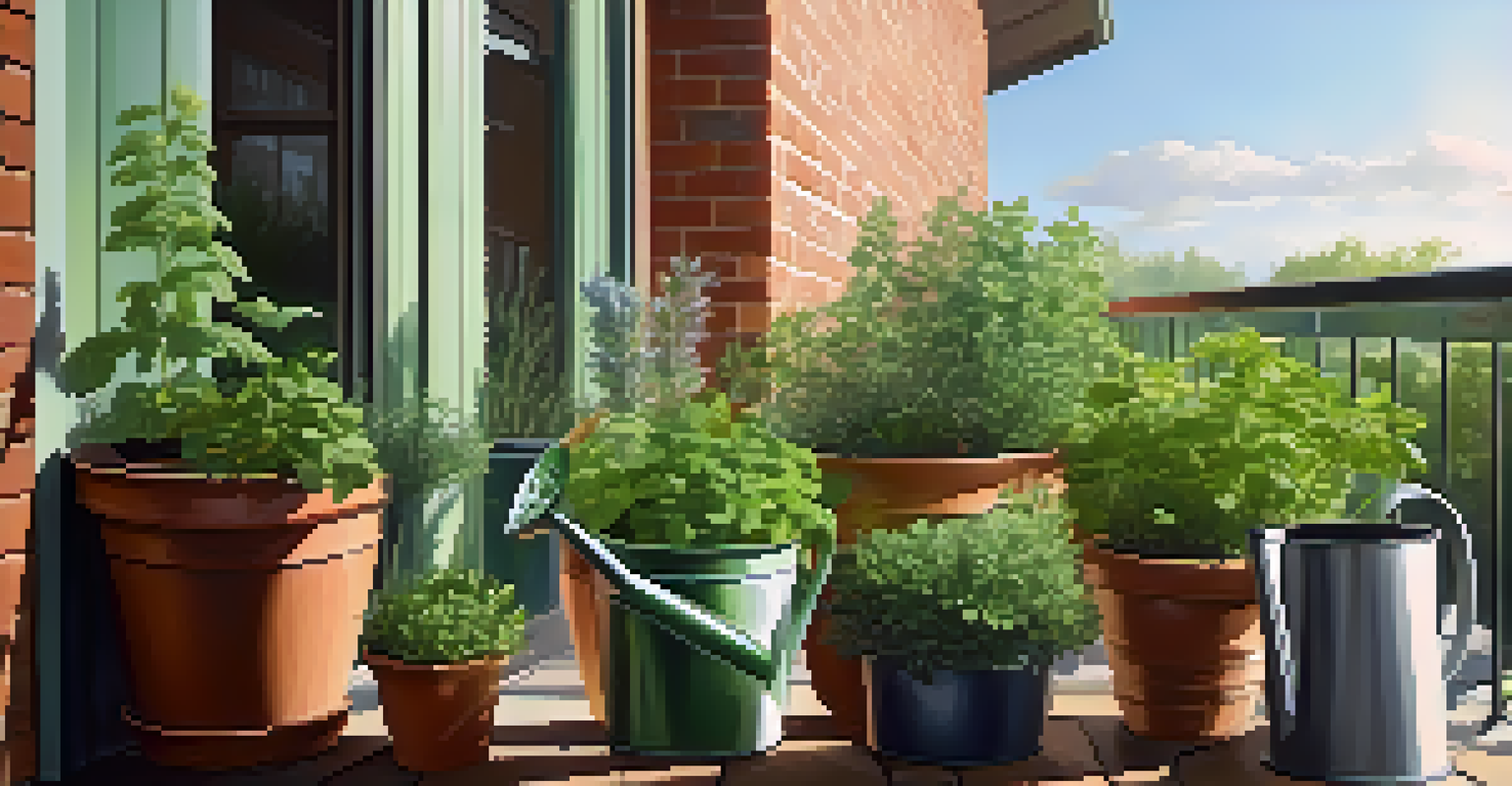How to Use Fresh Herbs in Your Vegan Recipes Effectively

Choosing the Right Fresh Herbs for Your Dishes
When it comes to fresh herbs, the right choice can transform any dish. For instance, basil adds a sweet, aromatic touch to pasta, while cilantro gives a refreshing kick to tacos. Understanding the flavor profiles of various herbs will help you pick the best match for your vegan recipes.
Herbs are the spice of life.
Consider the cuisine you're cooking as well. Mediterranean dishes often shine with oregano and thyme, whereas Asian recipes may call for mint or lemongrass. By aligning your herb choices with the culinary style, you can create a harmony of flavors.
Don’t be afraid to experiment with less common herbs like tarragon or dill. They may surprise you with their unique tastes, offering a new dimension to your favorite dishes. Always remember, the goal is to enhance, not overpower, the main ingredients.
How to Properly Store Fresh Herbs for Longevity
Proper storage is key to keeping your fresh herbs vibrant and flavorful. For most herbs, wrapping them in a damp paper towel and placing them in a plastic bag in the fridge works wonders. This method keeps them hydrated without turning them into a soggy mess.

Alternatively, you can store hardy herbs like rosemary and thyme upright in a glass of water, similar to a bouquet. Cover the herbs loosely with a plastic bag to keep moisture in and place them in the refrigerator. This simple technique can extend their life significantly.
Choosing the Right Fresh Herbs
Selecting the right fresh herbs enhances flavors and complements your dishes, aligning with the cuisine you're preparing.
Don’t forget to check your herbs regularly. If you spot any wilting or browning, it’s best to use those first in your recipes. Fresh herbs are most potent when they're at their peak freshness, so using them promptly will give you the best flavor.
Techniques for Adding Fresh Herbs to Your Vegan Dishes
The way you add herbs can greatly influence the flavor of your dish. For example, adding hardy herbs like thyme early in the cooking process allows their flavors to infuse the dish. Conversely, delicate herbs like basil are best added toward the end to preserve their vibrant taste.
Cooking with herbs is like painting a canvas; the more you use, the more colorful it becomes.
Chopping herbs finely can also enhance their flavor release, making them more potent in your dish. However, if you're looking for a milder touch, consider tearing the leaves instead; this method releases fewer oils, resulting in a subtler flavor.
Another fun technique is to make herb-infused oils or butters. These can be drizzled over your dishes for an extra layer of flavor. Just remember to blend or mix the herbs with oil and let it sit for a while before using it to allow the flavors to meld.
Balancing Flavors with Fresh Herbs in Vegan Cooking
Fresh herbs can help you achieve a balance of flavors in your vegan dishes. The bright notes from herbs like parsley or mint can cut through richer elements like coconut milk or tahini, making your meals more enjoyable. This balance is especially important in vegan cooking, where flavors can sometimes blend together too much.
Think of herbs as your flavor enhancers. A sprinkle of fresh dill on a creamy vegan pasta can elevate the dish from ordinary to extraordinary. By being mindful of flavor contrasts, you can create more complex and satisfying meals.
Storing Fresh Herbs for Longevity
Proper storage techniques, such as using damp paper towels or water, can significantly extend the life of your fresh herbs.
Don’t shy away from using herbs in unexpected ways. For instance, try adding fresh rosemary to your sweet potato mash. This unexpected pairing not only enhances the flavor but also adds a gourmet touch to your everyday meals.
Using Fresh Herbs in Marinades and Dressings
Marinades and dressings are fantastic vehicles for fresh herbs, allowing their flavors to shine. A simple vinaigrette with chopped basil and garlic can elevate a salad to new heights. The acidity in dressings helps to extract and enhance the flavors of the herbs, making them more pronounced.
When creating a marinade, consider blending herbs with other ingredients like lemon juice or soy sauce for a robust flavor. For example, a marinade made with cilantro, lime juice, and garlic is perfect for grilled vegetables, infusing them with a zesty kick.
Experimentation is key here. Try different combinations of herbs with various oils and acids to find your perfect balance. The versatility of fresh herbs means you can create an endless variety of flavors tailored to your taste.
Incorporating Fresh Herbs into Smoothies and Juices
Fresh herbs aren’t just for savory dishes—they can also add a refreshing twist to smoothies and juices. A handful of mint can brighten up a green smoothie, while basil can add a unique flavor dimension to fruit juices. This is a great way to sneak in some extra nutrients too.
When using herbs in smoothies, start with small amounts to avoid overpowering the other flavors. For instance, a sprig of cilantro can complement a tropical smoothie with pineapple and banana, providing an unexpected yet delightful taste.
Using Herbs in Various Dishes
Incorporating fresh herbs into marinades, dressings, and even smoothies adds vibrant flavors and nutritional benefits to your meals.
Herbs can also be used in herbal teas or infused water. Simply steep fresh herbs in hot water or add them to your water pitcher for a refreshing drink. This is a simple way to enjoy their health benefits and add variety to your hydration routine.
Growing Your Own Fresh Herbs at Home
Growing your own fresh herbs can be a rewarding experience that enhances your cooking. Even if you don’t have a garden, many herbs thrive in small pots on a windowsill or balcony. Not only do you get fresh ingredients at your fingertips, but it also adds a touch of greenery to your space.
Start with easy-to-grow herbs like basil, parsley, or mint. These herbs are forgiving and can flourish with minimal care. Plus, there’s nothing quite like the satisfaction of snipping off a few leaves and adding them directly to your dish.

Remember to keep your herbs well-watered and in a sunny spot. Regularly harvesting leaves will encourage new growth, ensuring you always have fresh herbs ready to go. This not only saves money but also enhances your culinary adventures.